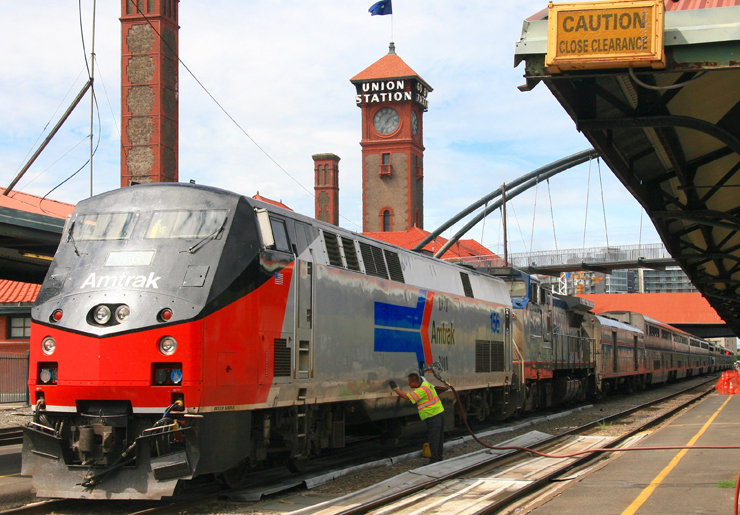
WASHINGTON — Amtrak is once again attempting to attract online bargain hunters by offering advance-purchase fares up to 35% off as part of its “Track Friday” sale, which runs through Monday, Dec. 2.
The saving over the lowest available “saver” prices are good for travel from Dec. 9, 2019, to April 30, 2020, although discounts for Northeast Corridor and state-supported trains don’t begin until Jan. 6, 2020.
Announced Friday and available at this page on Amtrak’s website, the discount is good for all national network trains except Auto Train. However, as in past “flash” sales, if a particular departure does not show a “saver” fare, no discount is available for the higher “value” level in Amtrak’s multi-tiered fare system.
A Trains News Wire analysis on Nov. 29 finds that while the saver fares are “blanked” for many long-distance trains that compete with state-supported trains on the same route during December, that is not always the case. Here are several examples of differences between long-distance and competing state-supported trains between the same city pairs for travel on Dec. 12:
— Washington, D.C.–Richmond, Va.: Palmetto $19; all other trains $33
— Seattle-Portland, Ore.: Coast Starlight $23; all other trains $36
— Emeryville-Sacramento, Calif.: California Zephyr $20; all other trains $31
— Chicago-Princeton, Ill.: Southwest Chief $10 – all other trains $15
Yield management theory, as practiced by Amtrak, dictates that when sellout reaches a certain level, the cheap fares are withdrawn. Revenue managers can control when that threshold occurs.
Yet the assumption that these controls automatically maximize revenue and don’t harm patronage falls apart when capacity is constricted. In the Chicago-Princeton example above, the Southwest Chief can operate “off-peak” with just two Superliner coaches, only one of them fully accessible [see “Vegas to Vegas on the Chief,” “Passenger,” January 2020 Trains].
As of midday on Nov. 29, both the Chief and California Zephyr on Dec. 2 were sold out from Chicago, with the first westbound seats available at Princeton for the Zephyr and Galesburg, Ill., on the Chief. Passengers willing to travel farther west from Chicago or suburban Naperville, Ill. — and spend a lot more money to do so — are out of luck.
Obviously, sellouts on one of Amtrak’s heaviest travel days is understandable, but it happens regularly throughout the year on this and other routes where capacity-starved long distance trains serve as vital conduits for travelers using them to go varying distances. Once less expensive seats are sold, “value” prices on the limited space remaining can be significantly higher.
Perhaps emblematic of Amtrak’s lack of attention to such details with these discounts is a line in the promotional blurb on the promotion’s landing page. It invites prospective passengers to “See the California Rockies.”






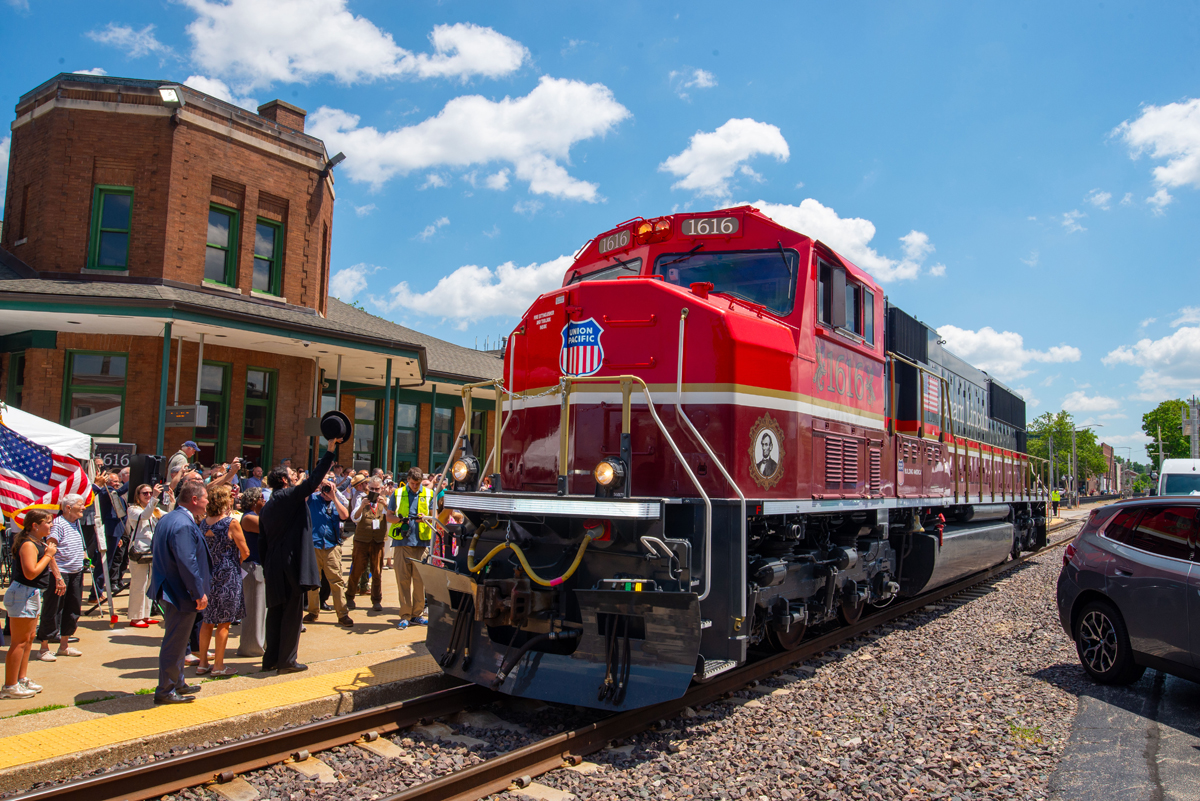
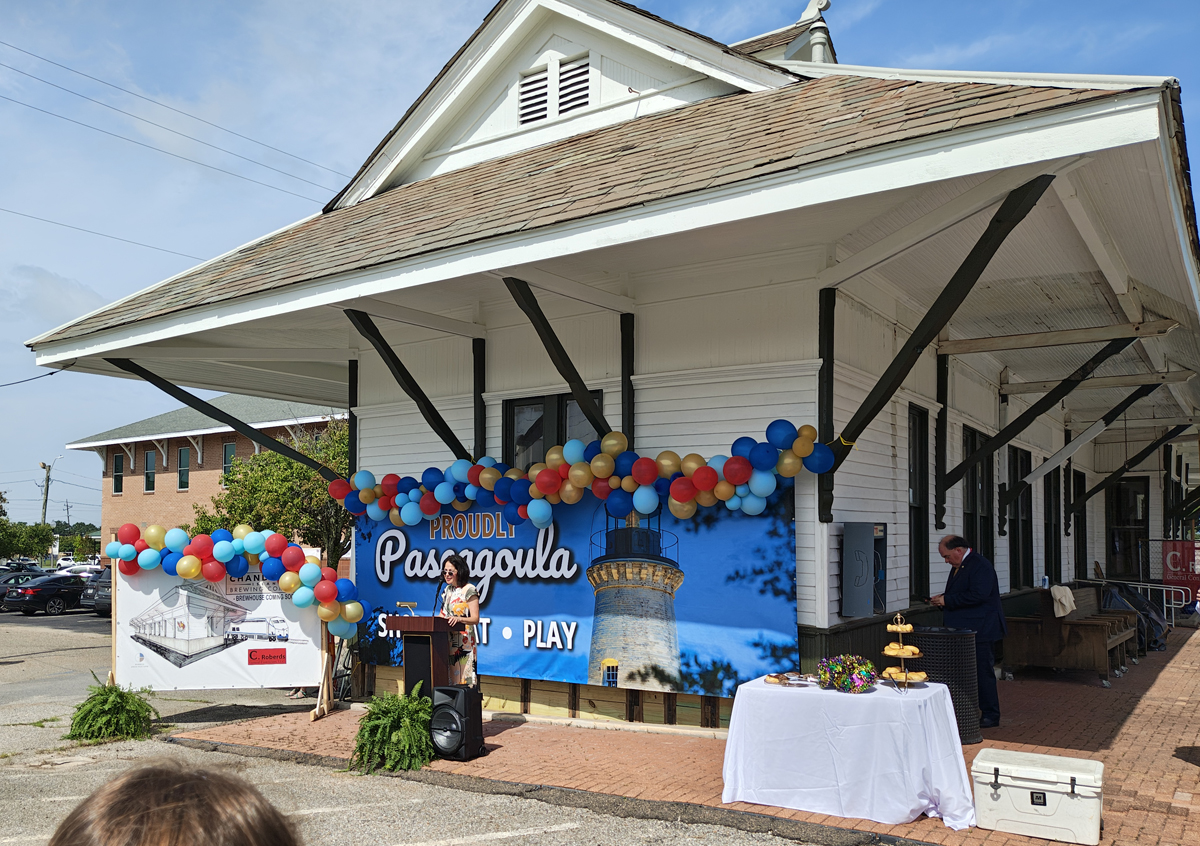
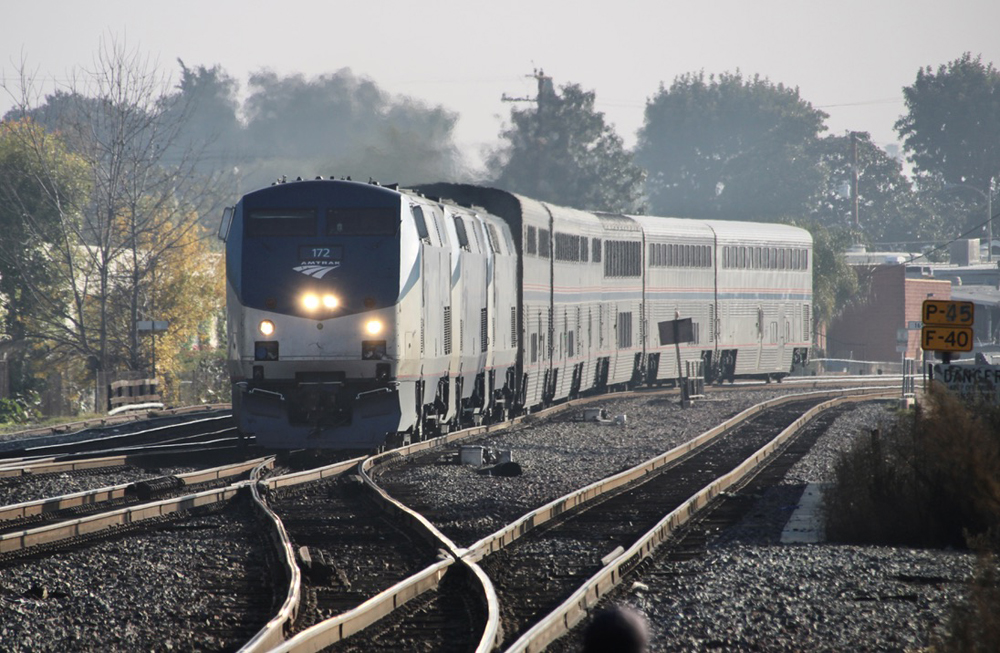
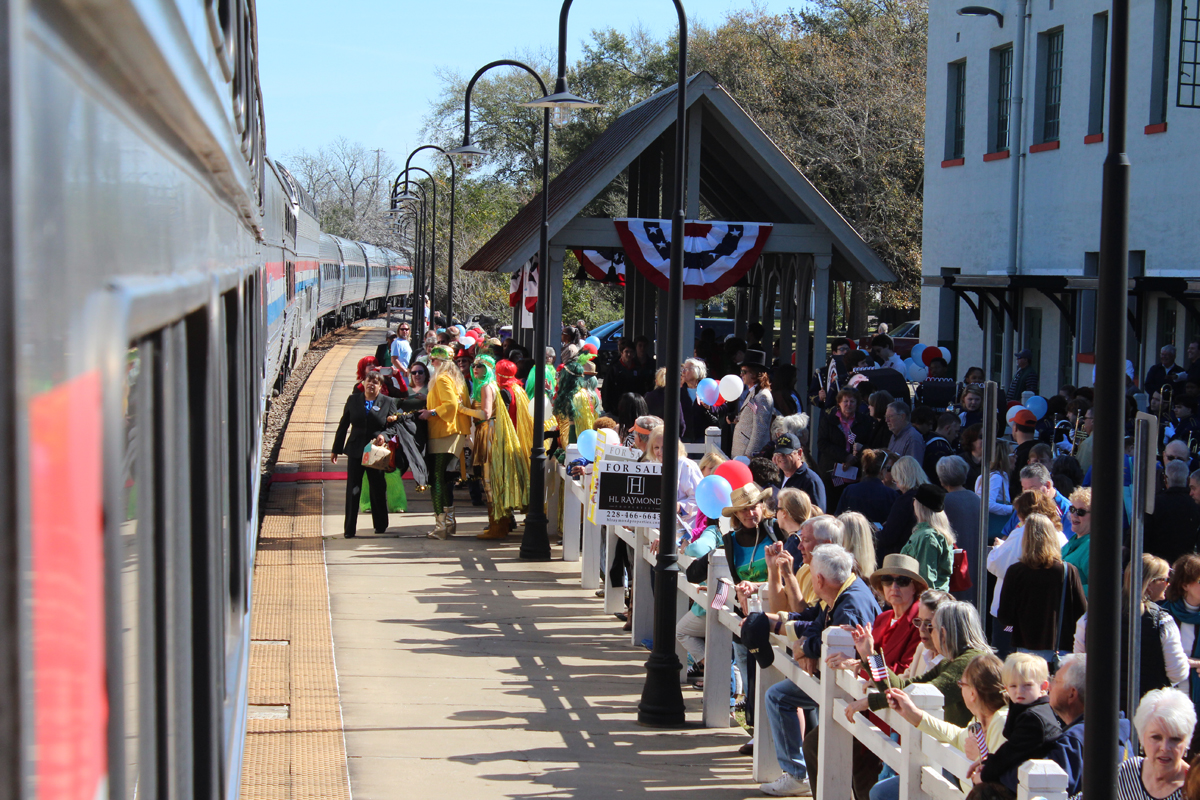




One question for Arthur – when DL updated those airframes, did they eliminate the galley?
No, they didn’t. There still needs to be a palatable, sustaining and predictable food service option on trains over a couple of hours of running time. Microwaved hot dogs, pizza and White Castle sliders in an Amtube or Horizon cafe car doesn’t cut it – leave those behind at the neighborhood 7-Eleven. I do agree that a fully-stocked bar (and attendant trained in basic mixology) would go a long way to helping out the Food and Beverage P&L, especially with the captive audience inherent to train travel.
Thanks Bob for the helpful analysis. So which is more efficient, three a day long-distance trains over the entire route or just corridor only runs, three a day.
Back to the original write-up here – Shorts have taken up space not allowing for longer distance riders. I’ve had more than one preacher point out that when you reach 80% at a church, there is no actual further growth. I have personally seen that happen in other instances. Two passenger cars on a train seem small compared to pre-AMTRAK days when the same trains ran with 20 or more cars (and sometimes an extra section after that)! Build your train with at least 20% extra capacity and you could possibly be adding more trains, passengers, revenue!!
Arthur J. Miller – You obviously “get it”. Bob Johnston, Andrew Selden and M. Singer, among others, obviously don’t.
Three or zero. That’s also the airline service model.
ARTHUR – Way back when, Paul Reistrup said if you don’t have three round trips a day you’re wasting your time.
Has anyone proved Reistrup wrong in 45 years? No.
But I think Arthur J. Miller has proved Reistrup right.
Charles, if they have their way, Anderson & Company will focus on fast, reliable, 3+ round-trips-per-day services between city pairs meeting certain thresholds for:
[1] distances between end points (100 miles to 350 miles);
[2] additional population centers along the route;
[3] endpoint metropolitan area size;
[4] a concentrated central business districts;
[5] public transit opportunities to keep Amtrak passengers out of private cars; and
[6] community financial and political support.
See anything I left out?
Look for changes in safety and training to capitalize on PTC technology.
Not much room left for chef-cooked meals. A full-service bar with good snacks will do.
How Amtrak handles selected long-haul legacy routes (Southwest Chief, Crescent, etc) will be a battle. But if there are three roundtrips between, say, CLE and Chicago and CLE and NYC, Anderson & Company will begin to generate significant political capital needed to handle the sound and fury AND the resistance of freight railroads. I wish them well.
Have a great week.
Arthur. I, don’t have much experience with Delta but more than United or American which I don’t fly at all. Let’s just say no one in Detroit misses Delta predecessors North Central or Repulsive Airlines or Northworst. Credit where due Delta Dick did something right.
When Amtrak does something that favor’s endpoints the cry from the passenger “advocate” community is to talk about how the long distance trains serve many smaller communities and not everyone is going from one end to another.
When Amtrak offers deals on short-distance trips on the long distance trains the cry is “But what about all the people going long distance!”
Amtrak is trying to maximize the revenue on the entire train. I’d assume it is not a perfect process. Do you overprice Chicago to Princeton in hopes of getting a Chicago to Denver rider? What is the cost of losing one and never getting the other?
Perhaps Mr. Johnston is indirectly making Mr. Anderson’s point. The long distance trains are a higher-revenue operation with customers traveling long distances. They are experiential. Corridor services offer frequency to customers going a short distance. Trying to have one train being all things to all people just does not work.
Arthur. Great post. Yesterday on a great tourist train we rode a wonderful Budd dome car. I look around what a maintenance nightmare for the railroad that bought it back then. The good old days were highly overrated look forward not back
Mr. Landy:
Thanks for your comment.
Far too many believe Amtrak is a taxpayer-funded amusement park (there is Steamtown) somehow obligated to maintain multiple anachronisms (dining car meals) for their enjoyment while ignoring multiple and obvious under-served markets (emerging city pairs with multiple round trips per day).
Sadly, IPH tried to turn back the clock with its Chicago-New Orleans service. We all know that did not work out. (Disclosure: I was IPH’s safety, training and compliance manager for just shy of 8 years.) It is highly problematic to me why we should expect Amtrak to use taxpayer monies to provide multiple iterations of historic 1950-style passenger services.
If someone needs a fix of historic railroading, there’s dozens of great railroad museums who will be pleased to help turn back the clock.
That said, I have a distinct railfan gene…made two pilgrimages to see #4014 (Wyoming and Deming)…have been known to take photos with a D-810 on a day off. But I would never require a railroad I was managing to ignore SD40-2s and use only EMD F3s or Alco RS-11s. We should not require Amtrak to do the rough equivalent.
Some of the comments below are a bit shrill and tinged with agony. Respectfully, they also seem to have a thread of resistance to change.
What’s going on here is nothing more than a utilization — and therefore revenue — maximization strategy that has been practiced for decades by capacity-constrained service industries. In the early 1980s, as deregulation took hold, Drs. Frank Davis and the late Edwin Paul “Pete” Patton, both University of Tennessee professors, helped refine and define new service industry strategies. Their techniques were adopted by airlines, cruise ships, hotels trucking companies, and selected premium trains on two railroads (BN and ATSF).
While Anderson replaces senior Amtrak marketing personnel with unjustly and pejoratively-labeled “fly boys,” Delta Air Lines is making all sorts of money. Plus, due to its superior reliability and customer service levels, Mother Delta often can charge $100 to $250 more for its tickets than can its competitors (AA, UA) for an identical service.
I’d recommend that everyone should give Anderson & Company a chance to make changes and see what works. References to long-gone NYC services, pricing and business models are really not germaine to today’s Amtrak issues. You might find that saying farewell to a chef-cooked meal on the Late Shore Limited is worthwhile if Amtrak could develop services out of Cleveland that don’t arrive and depart between oh-early-thirty and dawn o’clock.
No, I don’t work for Anderson, but I have nearly 4 million miles on DL accumulated over 30+ years. Anderson was just one of several successful CEOs who made DL the airline preferred by a veritable army of business travelers.
And none of us ever seriously petitioned DL to keep Golden Crown DC-7s or B727-200s in service once MD-80s and B757s became available. Admittedly, these old planes were fun to ride, and we were sad to see them go. But our purpose in flying was to change locations. We were not trying to turn the clock back to the 1960s and we were not trying to travel in a government-subsidized time machine.
Amazing, as it has been so long since we even heard from Amtrak’s Marketing Department. Hopefully, however long the tenure will be of the fly boy recruited to run Marketing, given the past history of rapid turnovers, this individual will bring to the position the knowledge of geography and capacity to proof read. Apparently, Woody Allen was referring to Amtrak Marketing when he remarked, “80% of the job is just showing up…”
This is a breath of fresh air that accurately researches to factually analyze the self-imposed financial conundrum Amtrak has created for itself. How much of this problem can be attributed to the Board’s incapacity to provide effective input, oversight, and accountability; almost totally focused on real estate opportunities in the NEC? To what extent is the current CEO Anderson, who historically preferred avoiding rail travel to get a feel for the job, but has not hesitated to continue the self-inflicted organizational damage to lay-off, or buy-out, whatever seasoned managers are left? While Andersen replaces experienced railroaders with his fly boys, during their break-in period to learn that Gandy Dancer is not the name of the bar across from HQ, it behooves Amtrak to carefully read, understand, and accept Bob Johnston’s analysis here.
1) Why would the long distance routes be deprived of a consist build-up to meet the increasing travel demand across the entire route? In lieu of operating a coach for “shorts” as was previously done, today’s Amtrak management is content to push the “short” travelers into the Sightseer Lounge; requiring other travelers to return to their compartment or seat.
2) Amtrak is the only transport mode that has yet to properly understand yield management, which ties back to consists. Why prevent travelers from securing higher cost seats CHI-DEN because Amtrak was delighted to have a sold-out train, mostly filled with travelers between CHI-Omaha. Higher revenues are obviously sacrificed revenues due to the consist restriction.
3) Amtrak is the only company that uses its monopoly power to concomitantly allow the long distance routes it so disdains to compete against the state-supported routes to their financial detriment. This is another key factor why the states must be released from the current PRIIA legislation; the burden of an unaudited full cost methodology that loads-up state charges by shifting costs exclusive to the NEC; a clear avoidance of GAAP. To better appreciate this scenario, think of how hospitals cost shift from their lower paying governmental programs onto the better paying private insured patients.
4) What should also be mentioned is the failure of yield and revenue management from appreciating the ability to sell open capacity of sleeper space on day of arrival at a discounted fare, e.g., KC-CHI. The former New York central excelled in maximizing revenues by selling its own sleeper space as day parlors, e.g., Cleveland-CHI.
Only a monopoly devoid of oversight and accountability by both Congress and its Board can define the revenue ceiling it seeks, and stop there; ignore the increasingly longer travel surges that would justify a proforma for additional equipment; maintain a pugilist relationship with the state-supported corridors.